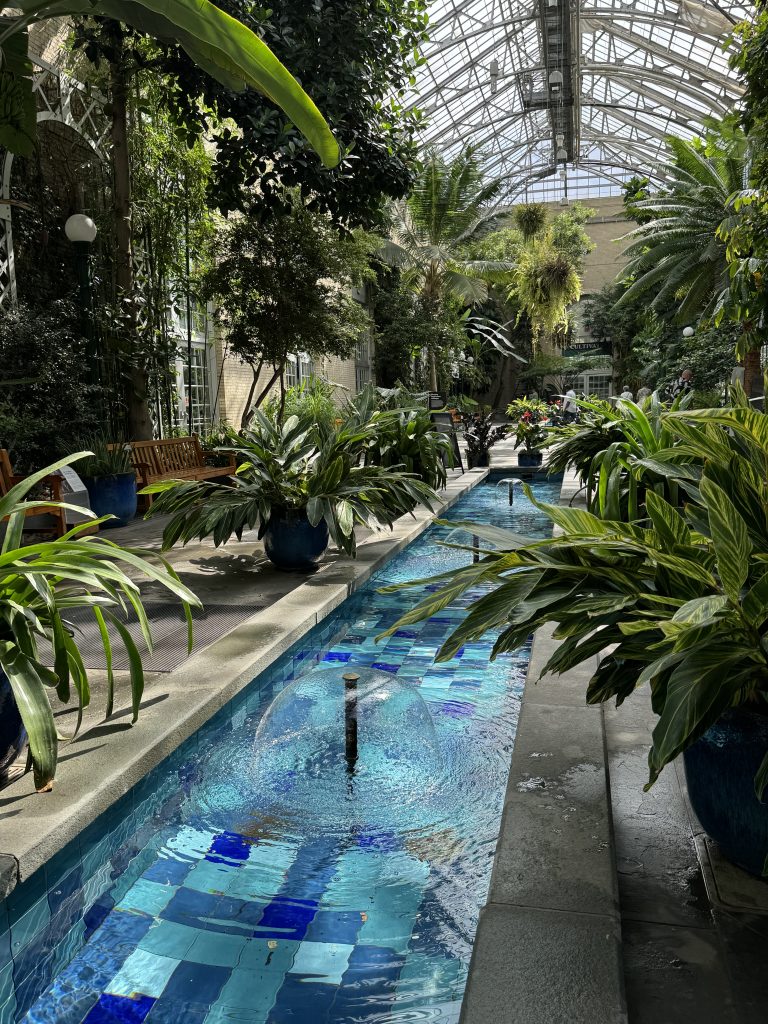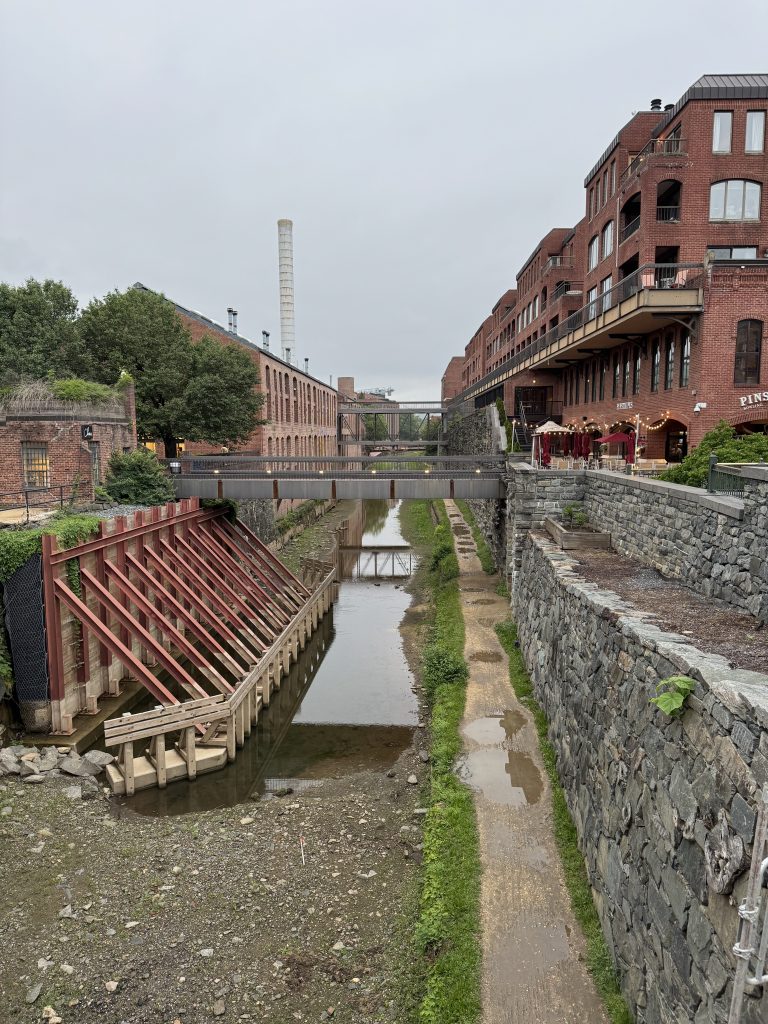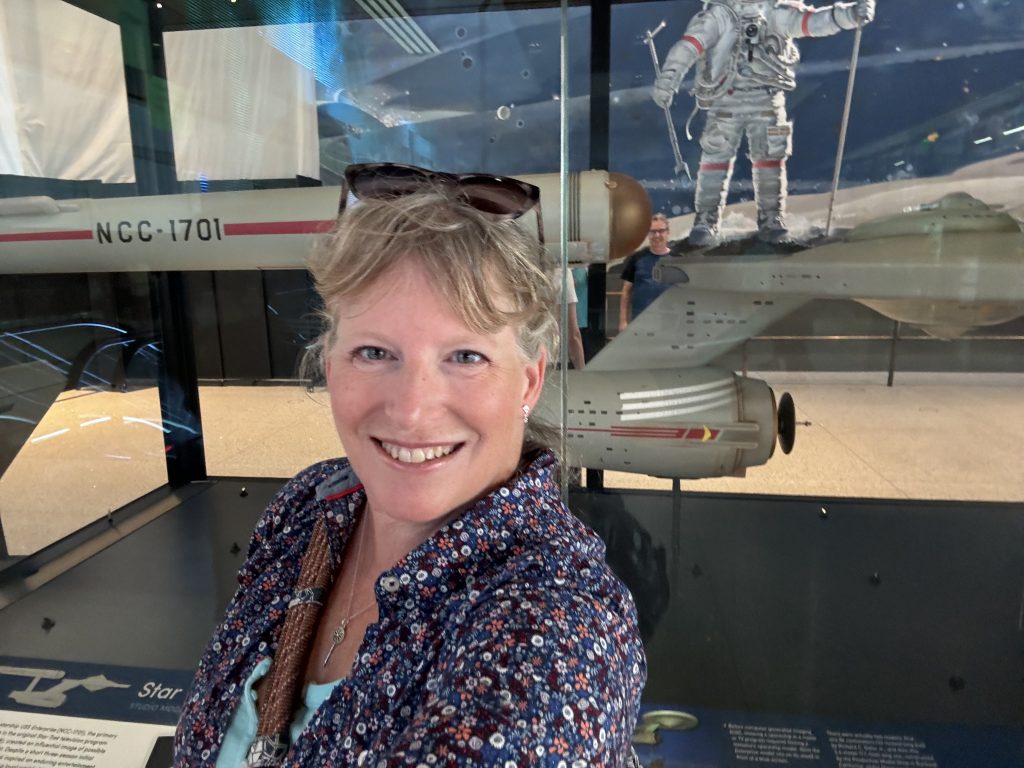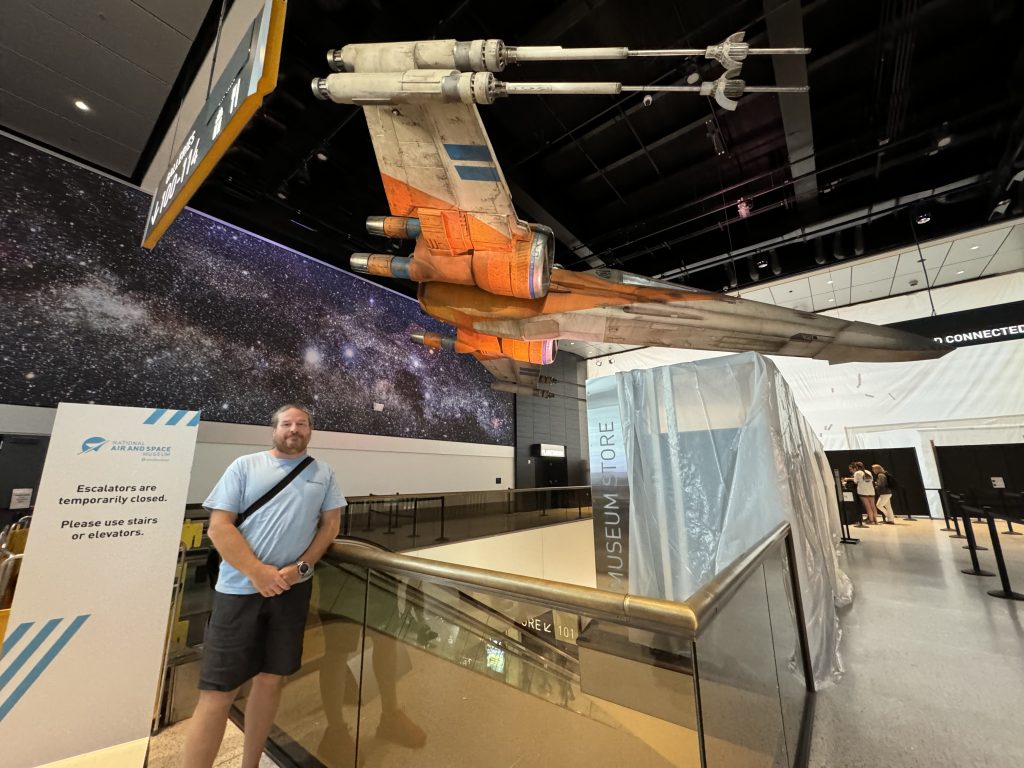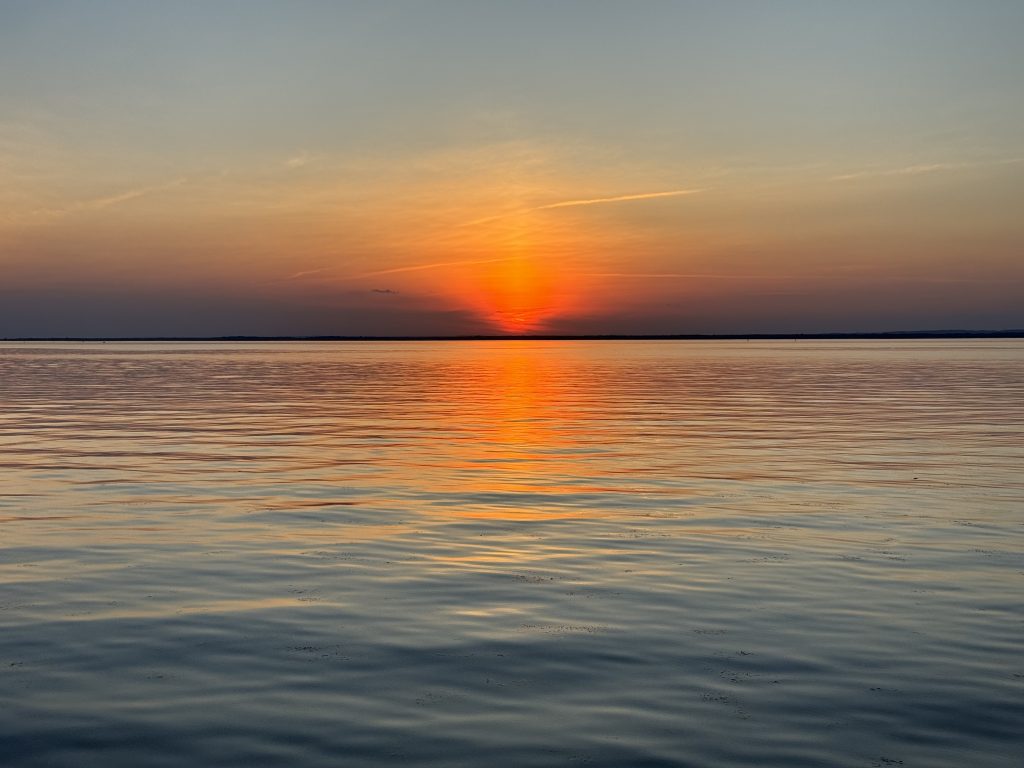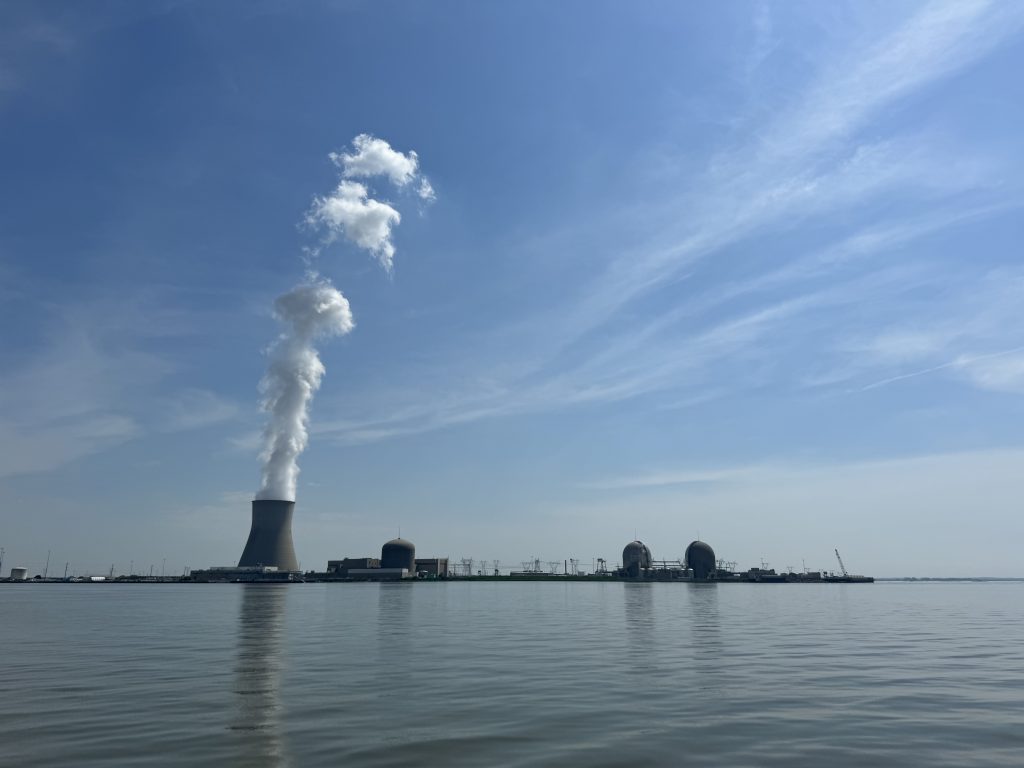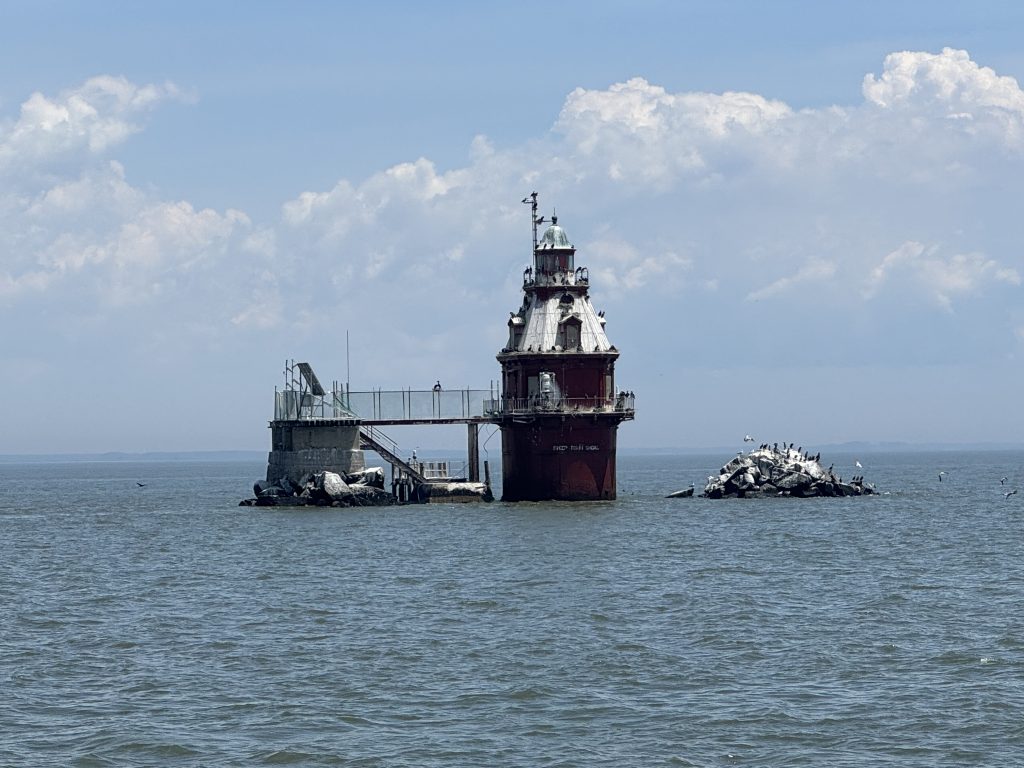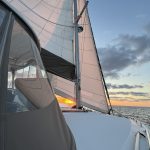May passed in a whirlwind of work, adventures, and travel. We covered over 500 nautical miles, primarily motor sailing. Our journey included a brief stop at the anchorage near Zimmerman Marine, a two-week stay in Washington, D.C., and a few days in Newport, RI. We also made our annual pilgrimage to Wilmington, NC, for doctor visits. Heading north in May has turned out to be a great idea.
From Salt Pond Marina in Hampton, we ventured down to the Phoebus anchorage to wait a day or two before heading up to Matthews. Before stopping here, we were warned by the crew of SV NoChuz that the holding closer to the bridge is not great due to the bottom being stirred up by construction. Keeping this in mind, we anchored towards the channel. Instead of using the public dinghy dock, we paid $10/day to use the dinghy dock at Old Point Comfort Marina since we still had a rental car. We did some provisioning and then headed up the Chesapeake towards the Potomac.
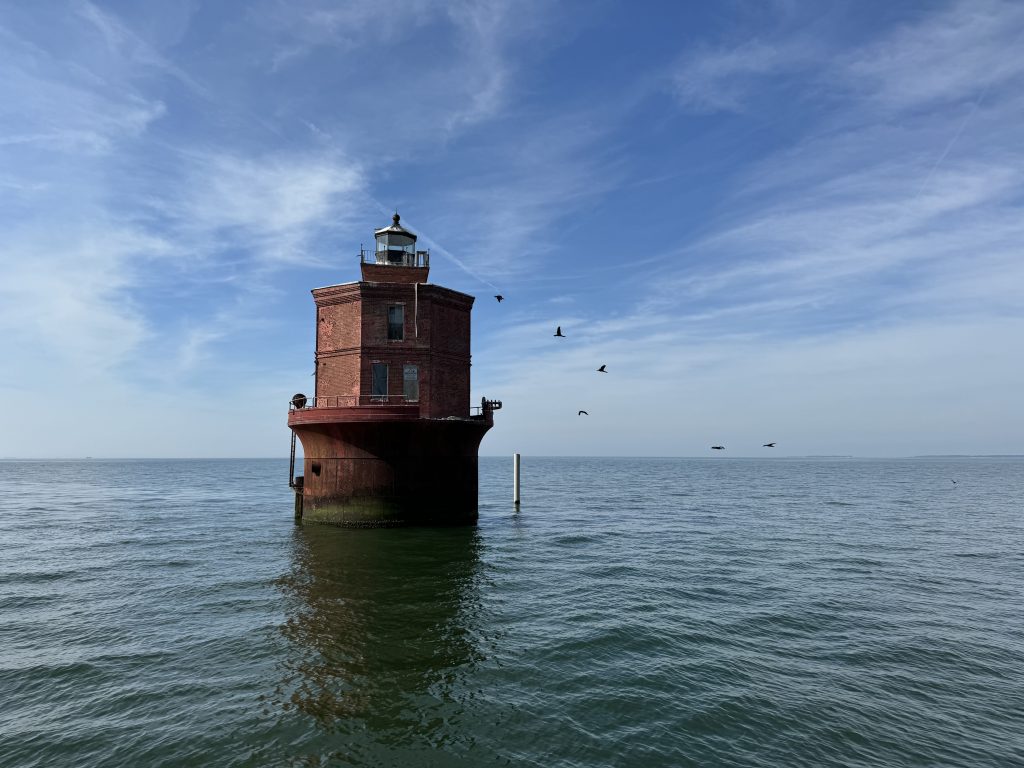
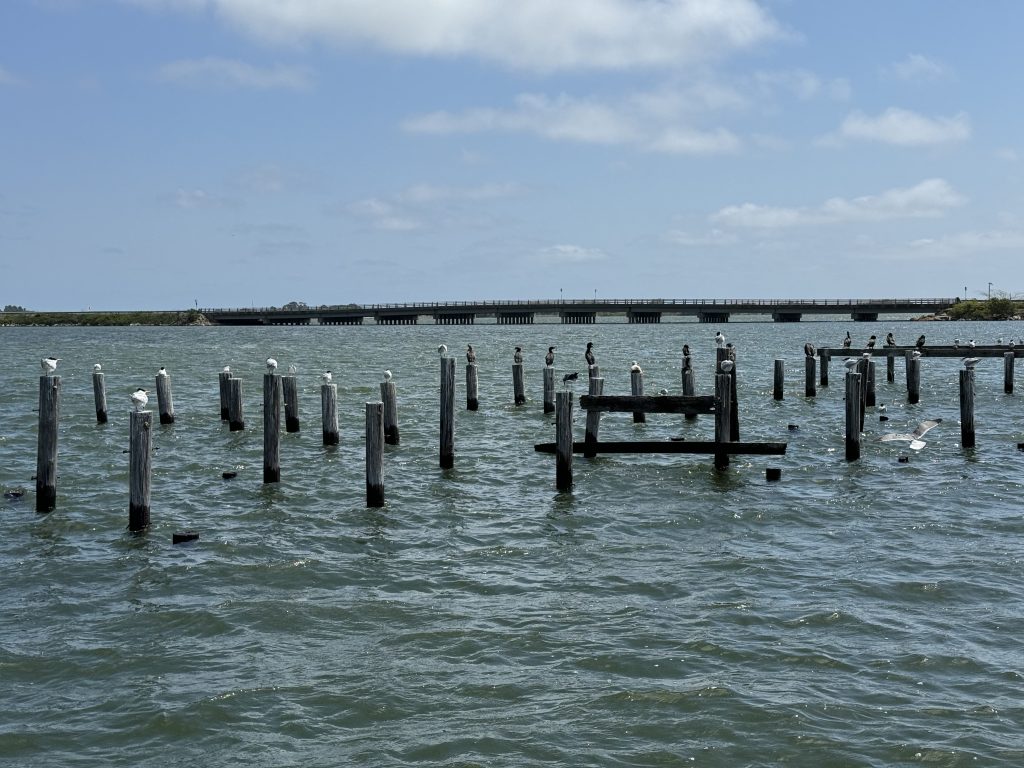
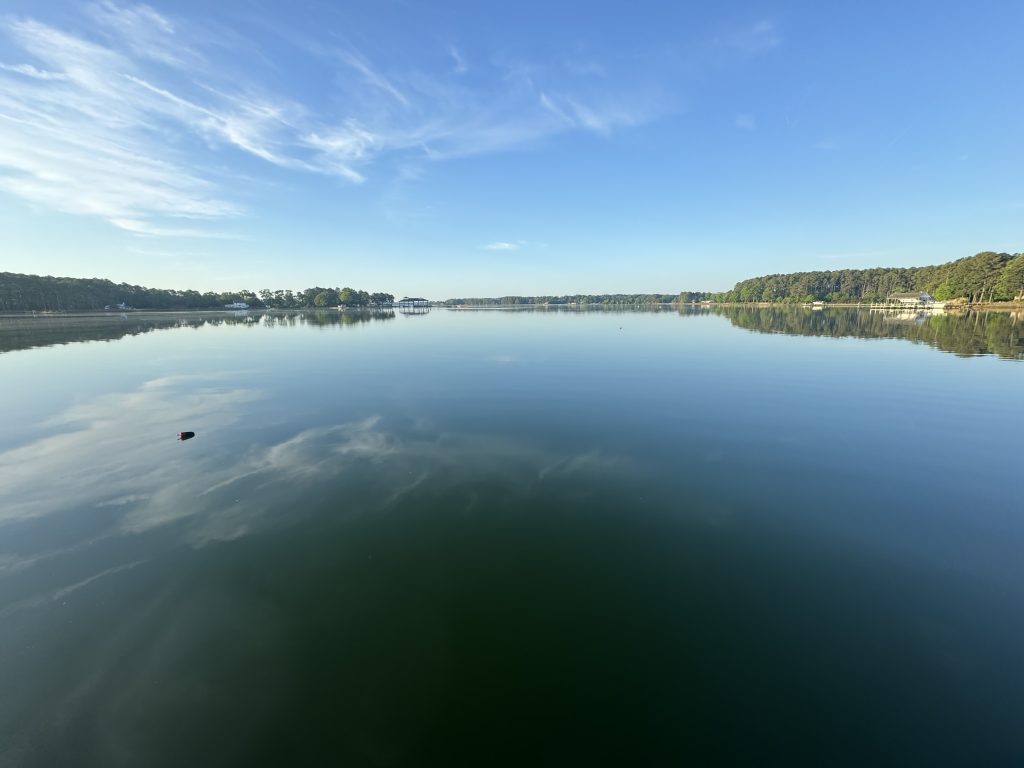
For those wanting to visit Washington, D.C. by boat, the journey up the Potomac is longer than you might think—approximately ninety-five nautical miles of mostly motoring. If you’re lucky, you might get a bit of sailing in. Surprisingly, this stretch is quite scenic, with a lot of trees and a few scattered houses. As you get closer to Alexandria, the homes start to get really big.
We planned our route for a two-day trip upriver, with our first stop at St. George Creek. We dropped anchor and took the dinghy to the Ruddy Duck Brewery and Grill for lunch, where we found ourselves the only patrons—a common experience during our May travels, as the boating season had yet to begin. The food was excellent, and the dinghy dock made it a convenient stop. From there, we continued to Breton Bay, anchoring for the night in a wonderfully protected spot. We highly recommend this anchorage as a great stopping point.
On day two, we motored up to National Harbor, where we anchored for night two. Just upriver of National Harbor is the Woodrow Wilson Memorial Bridge, which has a charted clearance of 76 feet at MHW, with navigation lights hanging down 5 feet on steel girders on each side of the center channel. The bridge does have a draw, but it will not open for pleasure vessels Monday through Friday between 5 AM and midnight, and Saturday, Sunday, and Federal holidays from 7 AM to midnight, with at least twelve hours’ notice to the bridge tender. Fizzgig has a 76-foot air draft, not including the VHF antenna on the top of the mast. Not wanting to go through the bridge in the middle of the night, we opted to spend the night by National Harbor and go through the bridge at low tide the next afternoon.
I would not recommend the anchorage by National Harbor. It is very shallow and just outside of the channel markers from the Potomac to National Harbor Marina. The marina is one of the stops for the Alexandria ferry, and they don’t seem to believe in the existence of no-wake zones.
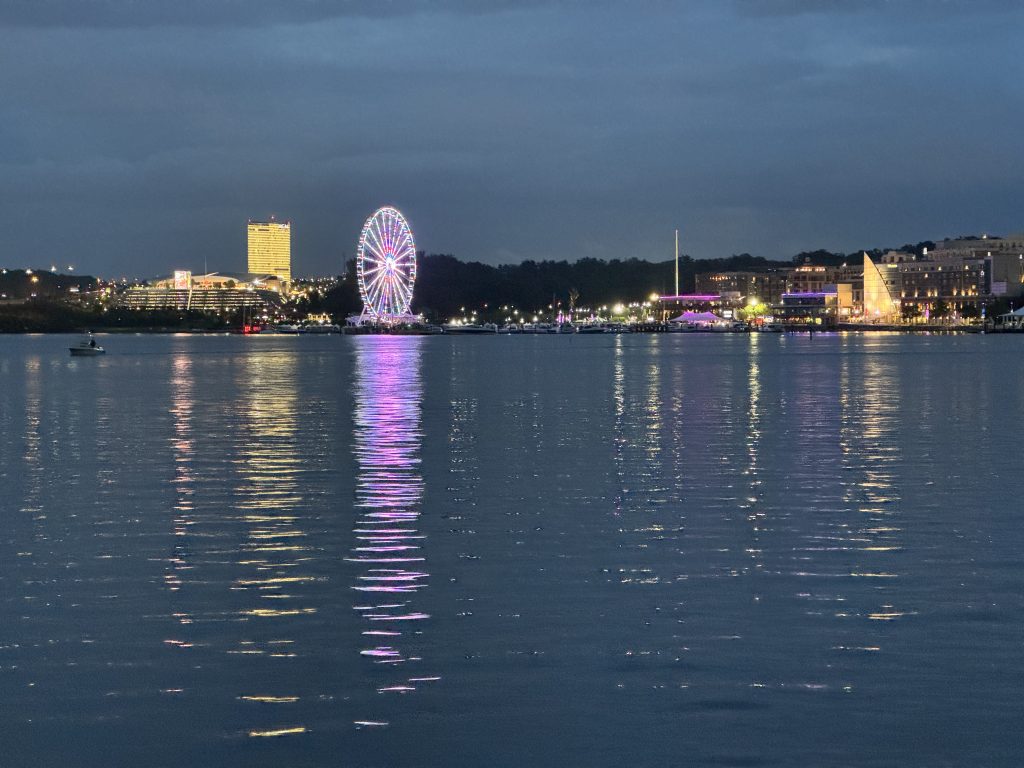
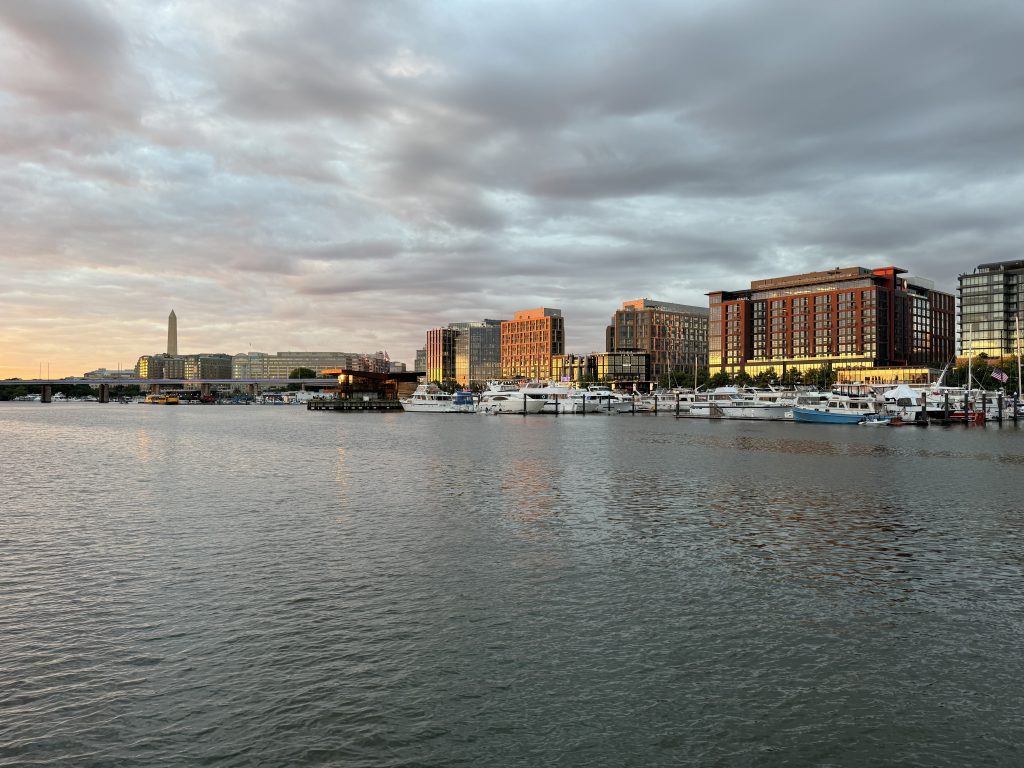
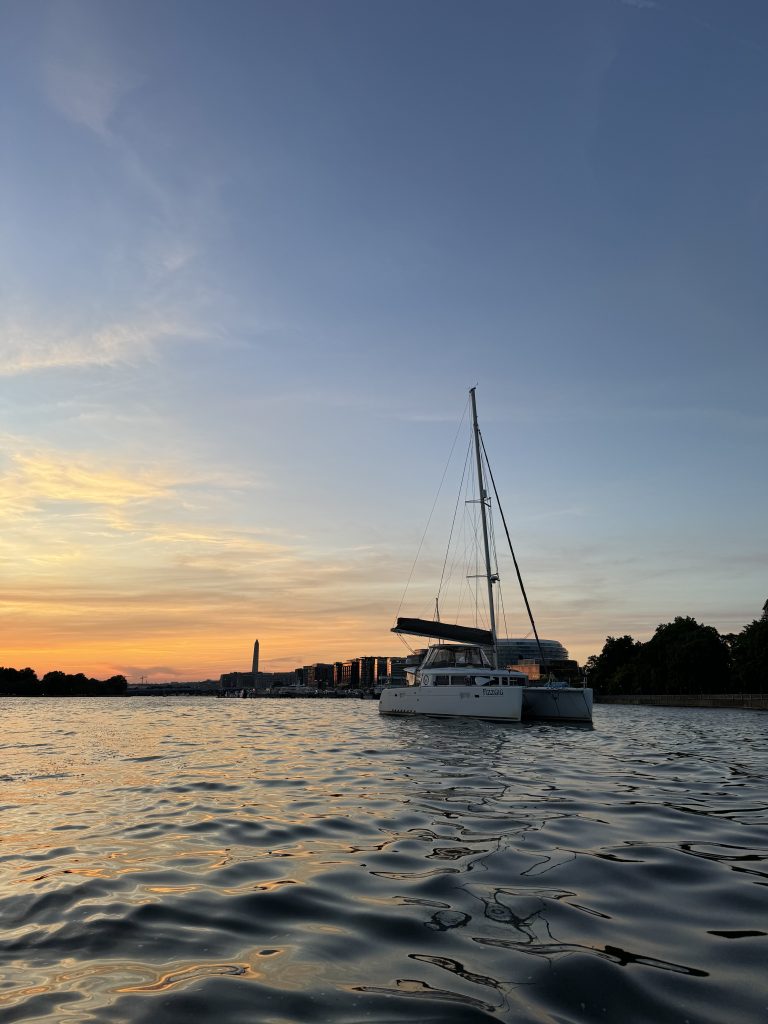
The next afternoon, as we were getting ready to lift anchor and head the fifteen minutes to the bridge, we saw another Lagoon 450F heading towards the bridge. I turned to Ryan and said, “We are following that boat!” I turned on the engines and positioned Fizzgig behind the other 450.
We activated the mast cam for our passage under the bridge. I stood on the forward deck to ensure the mast was centered between the navigation lights hanging from the bridge, while Ryan navigated from the helm. We made it through smoothly, noting the tide level for our return trip to the Chesapeake. The following five nautical miles to the Washington Channel anchorage were uneventful.
In the Washington Channel, next to the Wharf Marina in DC, there is a very small designated anchoring area that can accommodate a maximum of five boats. This capacity assumes that everyone uses a standard amount of scope and anchors efficiently. After dropping anchor, you must contact the DC Harbor Police, who will ask for your boat name, the number of people on board, and the length of your stay. Due to the limited space, anchoring is restricted to a maximum of one week. After that, you must check in with the Harbor Police, who will inform you if you can stay longer or need to move. If relocation is necessary, you have two options: move to a marina or one of the moorings offered by The Wharf Marina. Fortunately, we only needed to anchor for two nights before our mooring reservation began. (Note: There is only one mooring ball sized for a 45-foot boat, so early reservations are recommended.)
The Wharf Marina offers dinghy docking for $10 a day, which includes access to all their amenities such as showers, laundry facilities, and mail delivery. They also provide bike racks on the dock, allowing us to keep our e-bikes securely locked for the duration of our stay. The mooring was excellent, offering a great view of the city and a short distance to the marina. Additionally, the fuel dock is very easy to access.
Fizzgig was on the mooring for a few days while Ryan and I traveled to Wilmington for our annual doctor visits, eye exams, and to celebrate my birthday and Mother’s Day. We felt the mooring was secure enough for an overnight trip, but with severe thunderstorms expected on the second night, we only stayed away for one night. We ended up staying in DC a week longer than planned to wait for my new glasses to arrive. After a good run following my PRK surgery, age has finally caught up to me, and I need glasses again.
We departed Washington DC on May 22nd and headed downriver towards the Chesapeake. We thoroughly enjoyed our time in DC, with the e-bikes being a huge bonus that allowed us to explore many places without relying on public transit. The only real surprise was not being able to use our watermaker. Upriver from Quantico, the Potomac is fresh water. Although a watermaker can be used in fresh water, the pressure must be reduced to avoid exceeding the maximum liters per hour it is rated for. Our Aquabase, being completely automatic, didn’t handle this well. We decided the best option was to not use it and instead get water from the fuel dock at the marina. By the time we left DC, it was starting to feel a bit like camping. We departed just in time—once we passed back into brackish water, we turned on the watermaker, and everything was fine.
At the mouth of the Potomac, we turned north into the Chesapeake, heading towards the Chesapeake and Delaware Canal. Our first night was spent anchored outside Pax River Naval Base, where we greeted our friends on *It’s Time*. On the second day, we topped off our fuel at Tolchester Marina and then anchored at Grove Neck for the night. The next morning, we traversed the C&D Canal, journeyed down Delaware Bay, and headed into the Atlantic towards Newport, RI.
